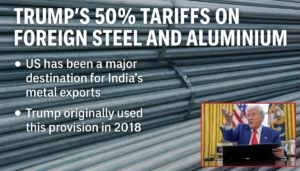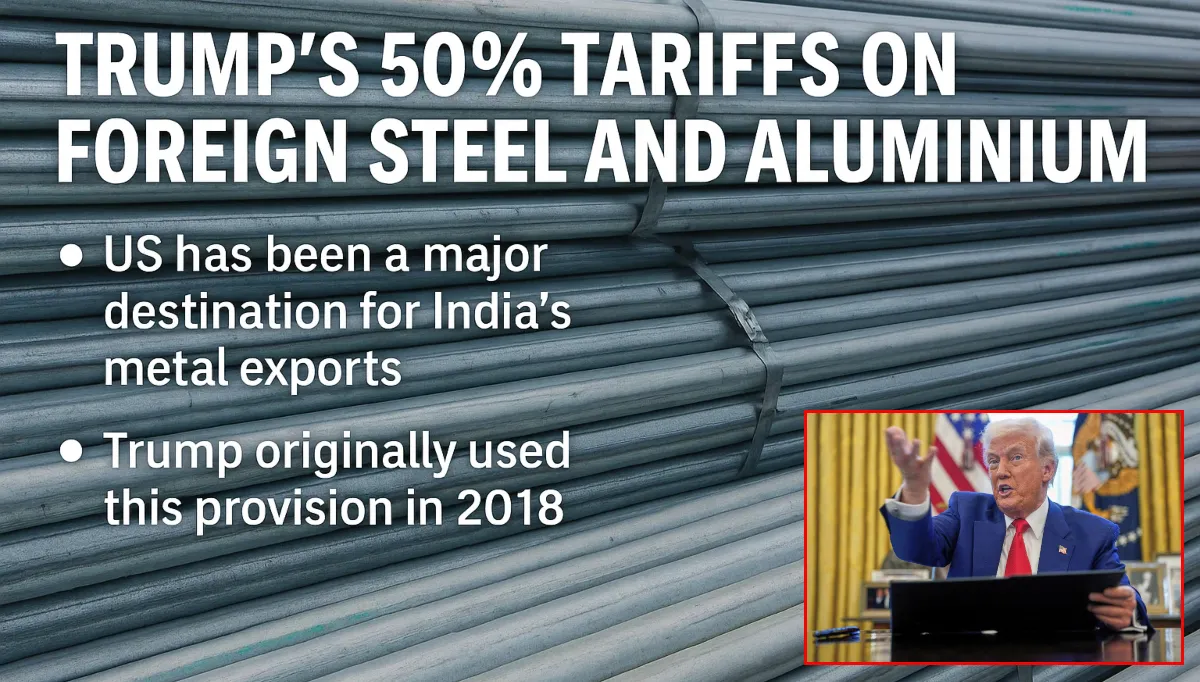When people hear about U.S. tariffs on imported goods, two terms often come up: Section 232 and Section 301. Both tools allow the government to impose tariffs, but they serve very different purposes. Yet despite their differences, both have sparked debate over fairness, economic impact, and America’s role in global trade.

What Is Section 232?
Section 232 comes from the Trade Expansion Act of 1962. It gives the U.S. President the power to restrict imports if they are seen as a threat to national security.
Here’s how it works:

- The Secretary of Commerce investigates whether certain imports harm U.S. security.
- A report is submitted to the President with findings and recommendations.
- The President can then impose tariffs or other restrictions to reduce the threat.
Section 232 measures are typically country of origin–based. For example, U.S. steel and aluminum tariffs apply broadly to nearly all foreign producers except for a few exempt countries.


The Section 232 Controversy
Supporters of Section 232 tariffs argue they are essential for:
- National defense: Ensuring the U.S. has enough domestic production of critical materials like steel and aluminum.
- Economic security: Protecting American jobs and industries from unfair foreign competition.
- Long-term planning: Reducing reliance on imports during crises or conflicts.

Critics, however, say these tariffs:
- Raise costs for U.S. manufacturers who rely on imported steel and aluminum.
- Hurt downstream industries like construction, autos, energy, and appliances.
- Risk retaliation from trading partners, sparking trade wars.
- Strain relations with allies who are major suppliers.

What Is Section 301?
Section 301 is part of the Trade Act of 1974. Unlike Section 232’s security focus, it targets unfair trade practices by other countries.
Here’s how it works:
- The U.S. Trade Representative (USTR) investigates practices that harm U.S. businesses.
- This can include things like forced technology transfer, IP theft, or discriminatory trade barriers.
- If unfair practices are found, the U.S. can impose tariffs or other trade restrictions to pressure change.
Section 301 tariffs are often product-specific and designed as an economic countermeasure against a country’s policies.
Section 301 in Action
A well-known use of Section 301 has been the tariffs on Chinese goods.
- The U.S. accused China of unfair practices like forcing American companies to hand over technology to gain market access.
- In response, the U.S. imposed several rounds of tariffs on hundreds of billions of dollars worth of Chinese imports.
- These tariffs covered everything from electronics and machinery to consumer goods.
Supporters argue Section 301 is needed to fight back against unfair trade and protect American innovation.
Critics say it:
- Raises prices for U.S. consumers and businesses.
- Disrupts global supply chains.
- Leads to tit-for-tat retaliation, harming exporters.
Economic Impact
Both Section 232 and Section 301 tariffs have reshaped U.S. trade.
- Imports of targeted goods declined as tariffs made them more expensive.
- Domestic production of certain goods, like steel, increased in the short term.
- Prices for raw materials and components rose, adding costs for U.S. manufacturers.
- Some companies shifted supply chains, but often at higher costs.
Downstream industries—those that use steel, aluminum, or tariffed Chinese parts—have struggled with higher input costs, lower margins, and competitive pressures.
Policy Debate: Protection vs. Competition
At the heart of the debate over both tools is a familiar question:
- Should the U.S. protect key industries and enforce fair trade, even at the cost of higher prices?
- Or should it embrace free trade to keep costs low, even if it means facing tough foreign competition?
Proponents of tariffs see them as necessary to level the playing field and maintain industrial strength. Opponents warn that they harm consumers, reduce competitiveness, and damage global relationships.
Different Paths, Same Controversy
While Section 232 and Section 301 have different legal foundations and targets, they share key similarities:
- Both give the U.S. government strong tools to restrict trade.
- Both are unilateral actions that can bypass international negotiations.
- Both have been used aggressively in recent years, reshaping trade relationships.
- Both have sparked intense debate at home and abroad over their costs and benefits.
Looking Ahead
As global trade tensions continue, Section 232 and Section 301 will remain critical parts of the U.S. trade toolbox. Policymakers face tough choices about how to use them:
- How to balance national security with economic openness.
- How to address unfair trade practices without hurting U.S. businesses and consumers.
- How to work with allies while competing with rivals.
The answers will shape not only America’s trade policy but also its broader economic future.
Ultimately, the debate over Section 232 and Section 301 reflects the challenge of navigating a complex global economy—where protecting American interests and maintaining global trade partnerships often pull in different directions.








